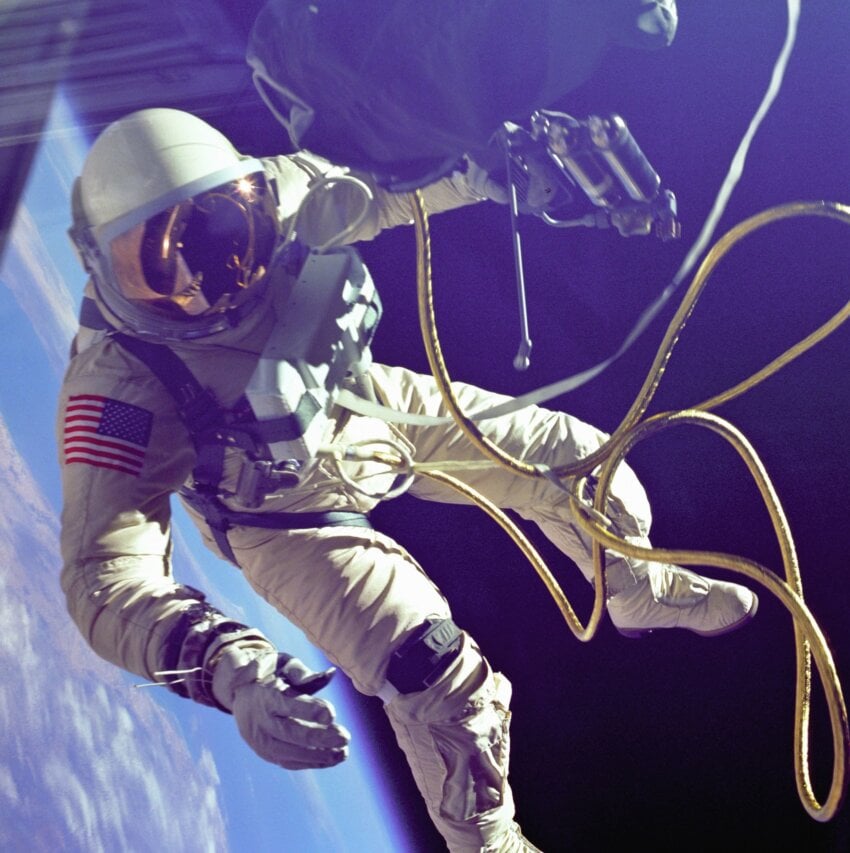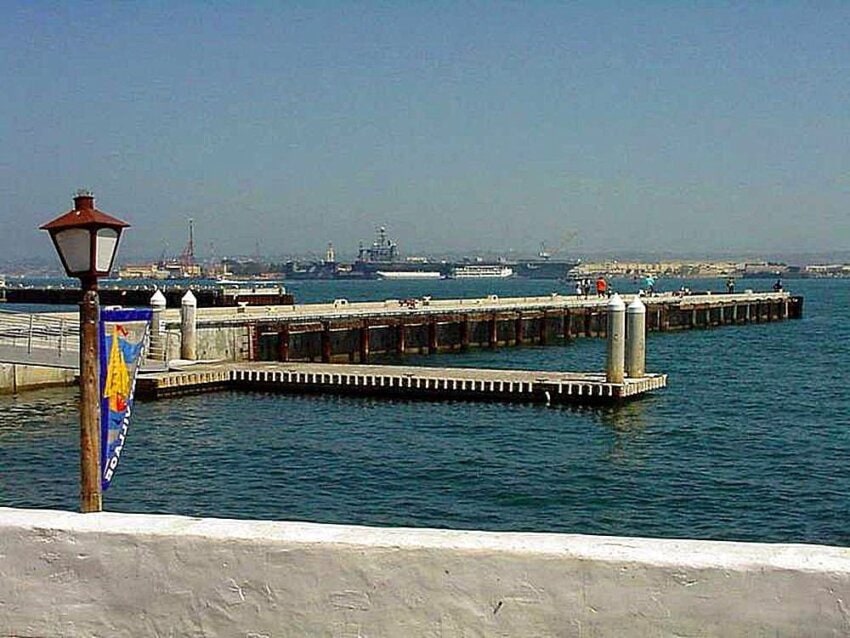Ilon Musk’s projects are always riveted attention, but interest in the launch of manned spaceship Crew Dragon is not due to the popularity of the entrepreneur himself, but with a truly cosmic opportunities that open up to people. If successful, SpaceX and NASA will begin to prepare for the full operation of the Crew Dragon: research missions and commercial travel. This means that in the twenty-first century, space tourism could become an entire industry, which will contribute to the development of the economy and the development of new projects to study the universe. What companies will compete with SpaceX, what are the main pros and cons of space tourism, as well as what prospects await space tourism in the future – read our article.
What is space tourism: a new format of travel?
Space tourism – a separate segment of the aviation industry, whose main purpose is to provide an opportunity to travel outside the atmosphere: to become an astronaut for a while, and use space travel for their personal (as entertainment) or research missions.
Experts consider four types of space tourism:
– high altitude fighter jet flights;
– zero-gravity flights in the atmosphere;
– short-term suborbital flights;
– long-duration orbital flights.
Due to the fact that the ticket price is high (from $250,000 to $120 million, depending on the duration of the flight), only a small number of people may join the club “space travelers”. But as assured by entrepreneurs, including Musk, Branson, Bezos, the more competition will be in the industry, the lower will be the cost of services.
What countries have developed space tourism?
The leaders in the space industry today are considered to be Russia, China and the USA. And despite all the interest and power of America, to carry out all their missions in space, they need to interact with Russia. Not a single spacecraft has been launched from U.S. territory in the last 10 years; the launch of the Crew Dragon should change the situation.
7 companies for space tourism
- Space Adventures
At the moment this is the only company that successfully organizes trips outside the boundaries of our planet in a “duet” with Roscosmos. Flights are made from the Baikonur Cosmodrome, and training can take place at Star City (Russia). The voyage may include both a visit to a space station and a flight around the moon.
- Virgin Galactic.
Founded by billionaire Richard Branson, Virgin Galactic offers one of the most “budget” space tourism options: a 15-minute flight to an altitude of 100 kilometers, with a time in weightlessness of about 3 minutes. Tickets for the suborbital flight on board the “SpaceShipTwo” duration of 2.5 hours are already sold out for several years ahead.
- Blue Origin
An offer similar to Virgin Galactic is provided by Blue Origin, the American private aerospace company owned by Jeff Bezos. It is currently developing the New Shepard reusable spacecraft. In 2019, Blue Origin joined NASA’s list of companies that will develop and produce spacecraft for the moon landing.
- SpaceX
Musk’s company is considered the world’s most active space launch operator. They have created the most advanced and inexpensive (as far as the space industry is concerned) reusable rockets, with commercial flights next in line. On May 30, SpaceX successfully launched its Crew Dragon spacecraft with astronauts on board as part of a test mission.
- Boeing
Although Elon Musk refers to Boeing as a commercial space launch company rather than a space tourism company, this experienced player in the aerospace industry could be a worthy competitor.
- Roscosmos
The Russian space agency not only organizes its own missions and flights, but also provides assistance to other countries and organizations, including training and launching NASA astronauts to the ISS.
- Zero2Infinity
A Spanish company, which quite unexpectedly declared its desire to become one of the operators of space tourism. They offer an interesting concept of travel: the ship will be capsules and huge helium-filled balloons, lifting to an altitude of 36 km. Technology Bloon has already been tested on satellites, and according to the creators, can be used for space tourism. Price – 110 thousand euros.
Main advantages and disadvantages of space tourism
Among the motivating factors in favor of space tourism are: the opportunity to see the Earth from space; to experience weightlessness; to have a unique travel experience. And this is certainly incredible and fascinating, but unfortunately it’s all limited to one person’s story. What are the pros of space tourism as an industry?
Elon Musk believes that the development of this exotic tourism will reduce the cost to nations of setting up exploration missions (the “tourist” will bear part of the cost). This will make it possible to launch spacecraft more often and get more information, as well as conduct experiments more accurately. Besides, absence of Russian monopoly, which exists today in the space market, will allow other countries to develop space industry more freely, thus strengthening their economy by attracting investors and specialists.
The main disadvantage of space tourism is its price. In spite of the fact that the flight of the first space tourist took place back in 2001 (Denis Tito did it, the price of the trip was $20 million), this exotic kind of traveling is still at the dawn of its development.
Company Ship Destination Altitude Time in zero gravity Cost
Virgin Galactic SpaceShipTwo Suborbit 90 km 3 minutes $250 000
Blue Origin New Shepard Suborbit 105 km 5 min ≈ $300 thousand
SpaceX Starship Moon flight 380 000 km 7 days $75 mln
“Roscosmos “Soyuz” Lunar circumnavigation 380 000 km 7 days ≈$120 mln
“Roscosmos “Soyuz” ISS 410 km 10 days ≈$50 million
During all time of existence of space flights as a service for people far from this sphere there have been only 7 such tourists. But the difficulty is not only in finance (in one America there are over 600 people whose capital is more than a billion, so there are willing to find), but also in time, which is required for training, for a variety of tests, checks, physical exertion. In addition, space tourism still refers more to the extreme types of recreation, rather than to comfortable tours, so not everyone is in a hurry to go to Orbit.
The flight program is quite limited – a flight around the Earth, the International Space Station (its visit allows prolonging the time in space up to several days), and perhaps in 2022 there will be a chance to go to the moon: the company SpaceX is preparing, and the participant should be an entrepreneur Yusaku Maezawa.
Prospects for space tourism
Flights into space themselves, as well as the term “space tourist” still give rise to much debate, in particular whether suborbital flights (without entering orbit) should be considered space or just extreme? But no matter how they are treated, suborbital flights will become the main driving force for the development of space tourism: the construction of the ship is much easier, so it will be easier to build, physical training is minimal, the profit is high.
As for the orbital flights to space, they have high research expectations. Their popularization may contribute to the appearance of “space hotels” for scientific experiments in the future. Today the only “stopover” for tourists in space is the ISS, and space hotels or bases will allow a better and more detailed study of other celestial bodies.
Space tourism – reality and prospects
Over the past decades, space tourism has gone from fantasy to reality. The first full-fledged tourist, who paid from his purse to the ISS in 2001, was the American Denis Tito. He flew on a Soyuz spacecraft.
His trip can be considered as the beginning of the era of space tourism. The second was a businessman from South Africa Mark Shuttleworth, who flew into space in 2002. After him, two more Americans flew as tourists: Gregory Olsen and Anousheh Ansari. All returned home safely.
However, the history of space tourism began in 1986, and tragically. During the launch, the Challenger spacecraft exploded. On board the Challenger was one of the crew, American teacher Christy McAuliffe. It was she who was to become the world’s first space tourist. Unfortunately, everyone died.
After that, the U.S. space tourism program was suspended, despite the commercial benefits of such flights.
In the world, there are a sufficient number of wealthy people who want to go to space and visit a space station. Therefore, today, space tourism is gaining popularity in many countries around the world. People buy tickets in advance, waiting for their turn.
Russia is the leader among the few countries involved in space tourism.
Such services are provided by Roscosmos and the Space Adventures space tourism agency. They send all tourists to orbit on “Soyuz” TM-11 and “Soyuz” TM-12, as the most proven and safe.
Today, Virgin Galactic also offers services for those wishing to travel outside the Earth’s atmosphere. Customers can take advantage of a two-hour flight outside the atmosphere. The ticket costs about 200 thousand dollars. Projects by such companies as SpaceX and Aerospace are also gaining popularity.
Development of space tourism in Russia
For the time being Roscosmos sends mainly foreign tourists to outer space. Among them are many Americans, because it is much easier and cheaper to fly to orbit by Soyuz spacecraft than by shuttle. This is why all the travel agencies offering to visit the space for entertainment or research, offer their customers the Russian spacecraft. Thanks to commercialization of space flights the development of space tourism in Russia is gaining popularity. Besides Roskosmos in Russia tourists are also sent to space by the company “Kosmocurs”.
All “amateur cosmonauts” undergo preflight training at Star City. They are provided with weightlessness by “Mig-29” planes, so that even before the flight they can feel the influence of this unusual condition.
How much does space tourism cost
Of course, flying into space is not a cheap pleasure and only very wealthy people can afford to buy a ticket to the orbital station. Today, the cost of a flight into space is estimated at $ 20 million. That is the price of a ticket to an orbital station. The price of space tourism is not affordable for everyone. In addition, tourists can buy the option of going into space. For this they will have to pay another $ 5 million.
It is also planned to develop space tourism to the Moon and Mars. How much will it cost a trip to the red planet is not known yet, but the flight to the moon will cost $ 700 million for a tourist. This is a tidy sum, which would force even very wealthy people to think before buying a ticket.
Why isn’t space tourism popular?
Space tourism is not popular for the simple reason that the launch into space of any aircraft is extremely expensive. Therefore, in order to recoup the presence of a tourist on board, tickets are sold at a very high price. For the spacecraft and the safety of the flight is important every gram present on board. Besides, there are still few spacecraft today capable of taking tourists to orbit. Besides, a flight requires good health and special training.
Not everyone will be able to withstand the heavy loads occurring during launch and ascent of the ship into the atmosphere. Do not forget about the dangers. Anything can happen in space and there is nowhere to wait for help in orbit.
Therefore, space tourism is still the most exotic, expensive and dangerous type of travel and recreation. Nevertheless, tourist flights into space are gaining popularity and are becoming more accessible.
There and back. How space tourism is built
Space tourism flights are somewhat reminiscent of promises to “start a new life on Monday.” A lot of talk and very little action. In the more than twenty years since the turn of this century, thousands of articles have been written about space tourism, but in reality only seven people have flown into space for their own money, one of whom, Charles Simonyi, head and founder of Intentional Software, has flown into space twice.
All space tourist missions were conducted with the help of Russian spacecraft “Soyuz” in the period from 2001 to 2009. These flights were made to the International Space Station (ISS) and lasted 10-14 days. Most often crews on the ISS work for several months, so the tourist would come to the station with one crew, and return to Earth with another. The price of such a flight ranged from $20 mln to $35 mln, and implied quite a long (up to a year) phase of preparation. The training was conducted at Star City and included both medical checks and practicing possible emergency situations. But it has been almost twelve years since any such flight was organized.
Fortunately, 2021 is set to be a milestone year and change the situation dramatically. By the end of this year, several missions, both suborbital and more serious missions to the ISS, are due to go into space at once. Let’s try to figure out what’s behind these names and whether we can already get in line for tickets.
There and back. How space tourism is built
Space tourism flights are somewhat reminiscent of promises to “start a new life on Monday”. A lot of talk and very little action. In the more than twenty years since the turn of this century, thousands of articles have been written about space tourism, but in reality only seven people have flown into space for their own money, one of whom, Charles Simonyi, head and founder of Intentional Software, has flown into space twice.
All space tourist flights were conducted with the help of Russian Soyuz spacecraft between 2001 and 2009. These flights were made to the International Space Station (ISS) and lasted 10-14 days. Most often crews on the ISS work for several months, so the tourist would come to the station with one crew, and return to Earth with another. The price of such a flight ranged from $20 mln to $35 mln, and implied quite a long (up to a year) phase of preparation. The training was conducted at Star City and included both medical checks and practicing possible emergency situations. But it has been almost twelve years since any such flight was organized.
Fortunately, 2021 is set to be a milestone year and change the situation dramatically. By the end of this year, several missions, both suborbital and more serious missions to the ISS, are due to go into space at once. Let’s try to figure out what’s behind these names and whether we can already get in line for tickets.
At the very edge of space
According to the International Aeronautical Federation, outer space begins at an altitude of 100 km above sea level. This boundary is called the Carman line and is taken rather conventionally. There is nothing to indicate it in the real world. But the boundary exists, and if you get above 100 km – you are already an astronaut. It is on this assumption that suborbital tourism is built.
To simply lift a spaceship with tourists to this altitude and not to put them into orbit, you need a much less powerful and expensive rocket. Well, and medical examinations for such a flight would require much less. Suborbital flight looks something like an ordinary space flight in miniature – ascent to 100 km altitude with overloads, several minutes of weightlessness, beautiful views from the windows and then descent of the spacecraft with a parachute. It lands almost in the same place where it started. At all given 10-15 minutes.
The cost of such a flight is about $ 500,000, in the future may go down to 200,000-250,000. Such a price can be achieved due to the full reusability of the New Shepard system – the rocket stage after the spacecraft reaches the desired height detaches, returns to the launch site and lands on its own engines, and the spacecraft returns to the parachute system and also reused.
The closest thing to starting regular suborbital flights is the company Blue Origin, which is owned by American billionaire Jeff Bezos. He has long been working on the implementation of this idea, and now finally the first flight with passengers should take place. Apparently, the first flight will involve three people – Jeff Bezos himself (to show how safe the developed system is), his brother Mark, and the auction winner, who gave $28 million for a place in the flight (what can’t be done for a chance to be the first!).
The first test flight is due July 20, in less than a month, and Blue Origin suborbital flights should be regular thereafter.
There is another company involved in suborbital flights, Virgin Galactic, owned by British billionaire Richard Branson. Instead of a rocket and a spaceship, it uses the WhiteKnightTwo booster plane, which climbs to the 16-kilometer mark and releases the SpaceShipTwo. The spacecraft, using its own engines, reaches the Carman line and then returns back. The entire flight takes two and a half hours, but they promise more weightlessness – as much as five or six minutes.
Richard Branson, after hearing about the Blue Origin flight date, said he would be in space sooner. The SpaceShipTwo flight date has been set for July 4. It is assumed that tourist flights will begin immediately after that. The billionaire began selling tickets for a flight into space in 2009, when the price for the flight was $ 250,000. By now, the line consists of more than six hundred people who have made a deposit.
Long, expensive, serious.
Another space tourist mission is due in December 2021. Two Japanese tourists – businessman Yusaku Maezawa and his friend and assistant Yozo Hirano – will fly to the International Space Station in a Soyuz spacecraft. They are currently undergoing training for the flight in Star City. The crew will be led by Russian cosmonaut Alexander Misurkin, and the mission will last 12 days. How much this flight to the ISS will cost is not yet known, but it is likely to be more expensive than it cost the space tourists of the “first wave.” Presumably, the price will be around $50-60 million. However, by all appearances, there are enough people in the world willing to pay such sums.
Yusaku Maezawa not only wants to visit the ISS, but also to fly around the Moon. Back in 2018, he bought tickets to fly around the Moon from Ilon Musk’s company SpaceX. Initially the flight was to take place with a Falcon Heavy rocket, but then it was changed to the Starship, which is currently under development. The Japanese entrepreneur continues to recruit a team of eight people – artists and musicians – to fly to the moon together at his expense.
In early 2022 the first flight of space tourists to the ISS should take place on SpaceX’s Crew Dragon spacecraft. Who will fly to the station, is not known yet, but the company Axiom Space in addition to this flight signed a contract for three more space tourist flights. This means that in the coming years we will see more and more tourists in orbit, the only thing left to calculate – whether you have enough money for such an amazing trip.
How much does it cost to go to space
And live your childhood dream.
As a child, many dreamed of becoming an astronaut. Now this dream is feasible, you only need money.
You can build your own rocket, rent a rocket already built by someone else, or even fly into space to work. Our expert found out how much it costs.
Build a rocket
Elon Musk first wanted to buy a rocket from Russia, but couldn’t reach an agreement. Then he decided to build rockets himself. According to him, they spent $390 million to design and build the Falcon 9. The largest modern rocket Falcon Heavy already cost 500 million.
Launch a rocket.
Companies make money by delivering various cargoes into Earth’s orbit. The Falcon 9 launch costs $62 million. The Russian Proton-M rocket costs a little more: $65-70 million. To send Falcon Heavy into space, it is necessary to spend $90 million.
To fly as a VIP-tourist
Space tourism is developing very actively: seven space tourists have already visited the ISS. Such a flight costs 40 million dollars. For additional 3 million dollars it is even possible to go into open space.
A cheaper flight
Richard Branson is developing his own space plane, Virgin Galactic. It is designed for six passengers. The ticket costs $250,000. Flights are scheduled to start in 2018-2019.
Flying on minimal payloads.
World View is going to send people into the stratosphere in hot air balloons. Tourists will rise to 30-40 kilometers. The ticket will cost $75,000.
To look at the space from the Earth
In the States and in Russia they offer to experience weightlessness in an airplane. With special maneuvers during the flight 10-15 times to achieve a state of weightlessness for 25-30 seconds. The ticket costs about $5,000. In 2016, the music group OK Go even filmed the music video Upside Down & Inside Out in such an airplane.
Watch others fly.
You can just watch others go into space. A 5-day tour of a rocket launch from Baikonur Cosmodrome costs 65,000 rubles. The nearest launch is June 6.
Earn like a cosmonaut
If you seriously want to become an astronaut, check out the salaries. American astronauts earn between $60,000 and $140,000 a year. Approximately the same salaries in Canada. In Russia, they pay less: from 60 to 90 thousand rubles per month. But for six months in orbit, Russian astronauts earn up to $150,000.














